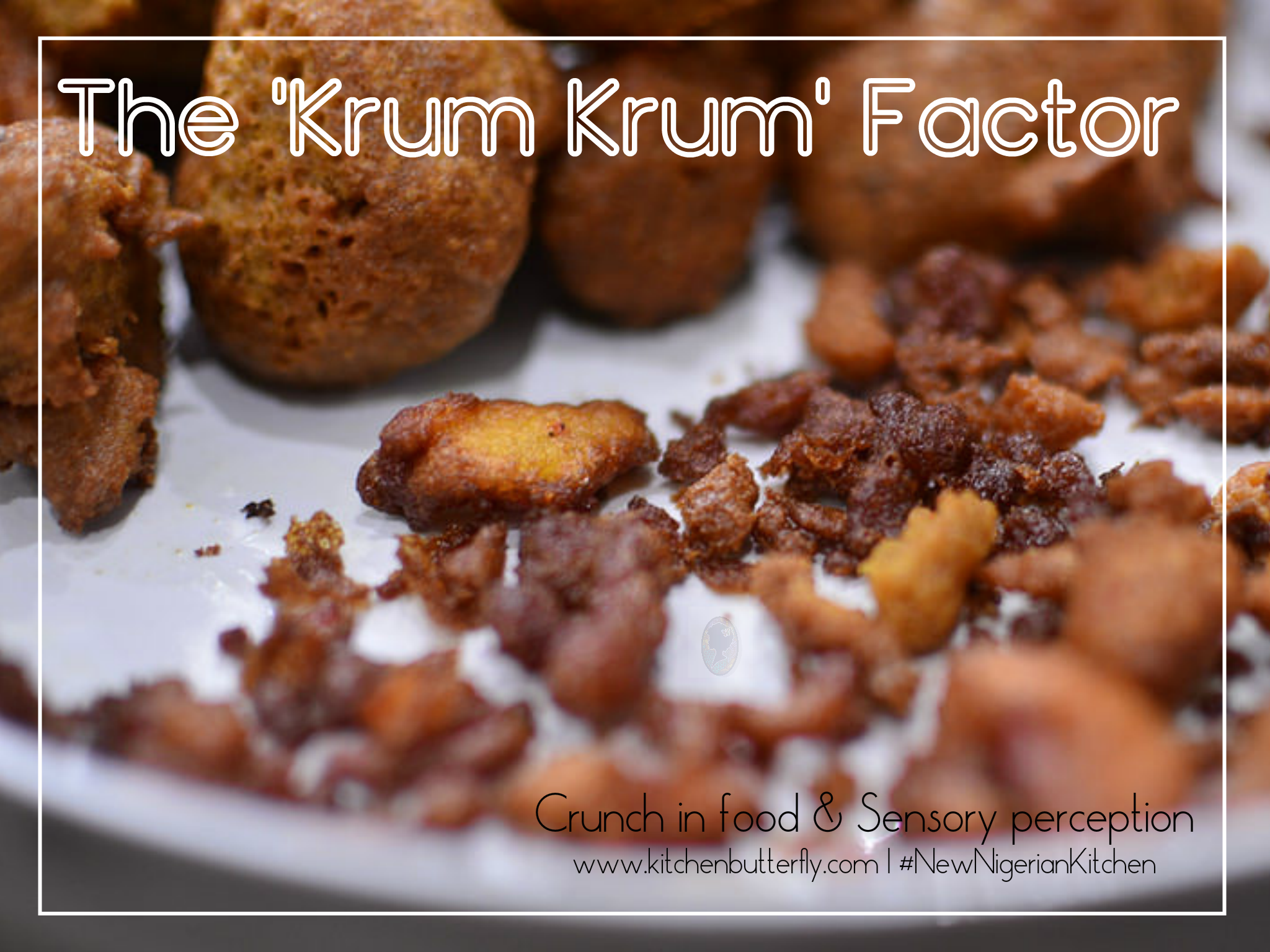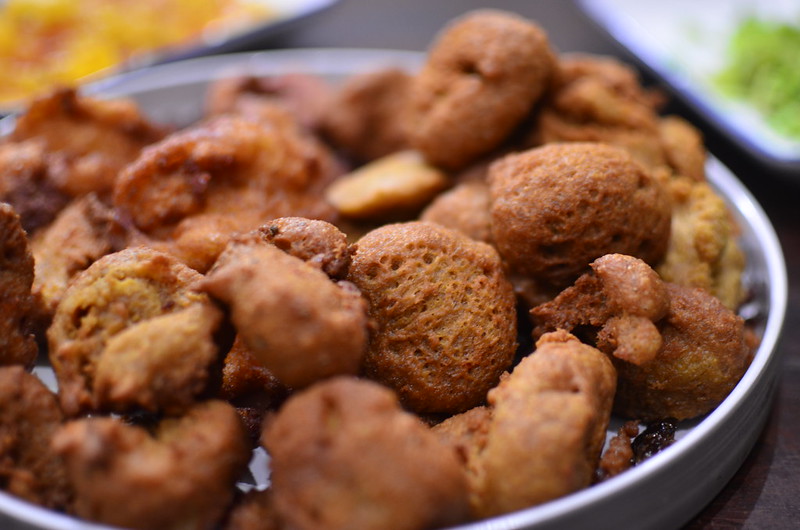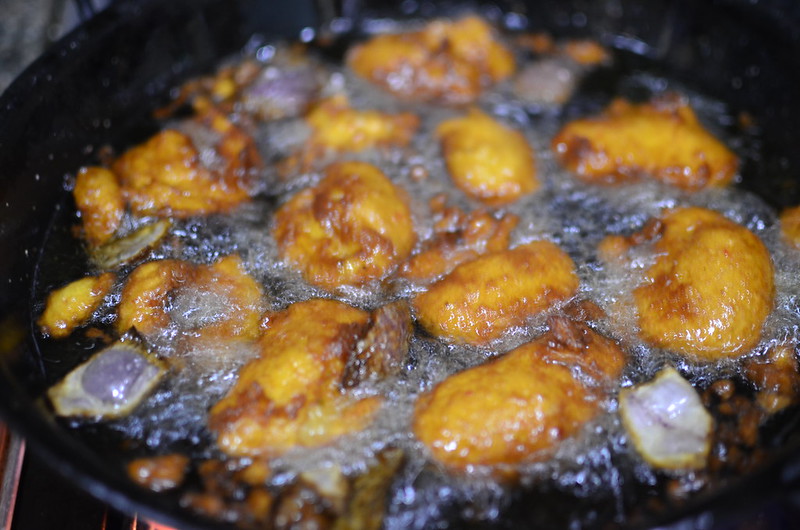My colleague, Oga Vee calls it the krum krum factor – that crispy crunch of snails and gizzards, biscuit bone, pomo, kanzo aka bottom pot. Erunrun. Crunch. Crust. The pendants from Akara. It is the corner of the loaf cake or bread, the edges of a crumble – that crunchy part in the midst of soft. The contrast, the opposite, the hard. For the longest time, I didn’t know there was a ‘name’ for them, not to talk of a Nigerian, Yoruba name – Erunrun.
The different aspects of food deliver a sense of fullness – taste, smell, texture and presentation and one of the most important ones to me is texture – the feel of the food on the tongue, between the teeth and the roof of my mouth.
I love texture in food and in Nigerian cuisine, that crunch is prized across a range of dishes. Its interesting that the noise, from the crunch isn’t ‘taboo’ as such or seen as an affront to propriety. The crunch in perfectly cooked snails can be found too in gizzards and garri. And I mentioned pomo, pronounced kpomo with the kp syllable – that syllable that isn’t present in every language. In Nigeria, pomo is cow hide and the crunch factor is at its peak when cooked just so, a happy medium between doneness and crunch.
On Kp, gb and other labial-velar consonants.
Tim Hayward in a piece’ Hard as Snails’ for The Guardian describes the texture of snails as ….‘a textural matrix somewhere between an undercooked artichoke heart and the cartilage from a premiership footballer’s knee – with just a tad more disquieting crunch.’; Source – The Guardian
The Krum krum factor – that sensory experience with some foods that is a perfect blend of flavour and texture, where texture appears to enhance the pleasure. I was reminded about this watching Chef’s Table many weekends ago. In one episode, Italian chef, Massimo Bottura talks about a dish he created entirely made up of ‘ The crunchy part of the lasagna’.
‘…and one of his signature dishes, “Crunchy Part of the Lasagna,” which may amount to the most sophisticated manifestation of chips-and-dip ever created’; Source: New York Times
Do you know the crunchy part he speaks of? I do. Part smoky, cheesy crisp-cracker with a lick of sauce, it is my favourite piece – the corner piece. Yes, I like the layers of lasagna, the soft and creamy sheets, béchamel and tomato sauce but that edge is the ‘ish. This reminds me very much of the Jollof rice ‘kanzo’, which isn’t quite top/ corner crunch but its crunch nevertheless and delicious to boot.
Italians grow up eating lasagne. There is no season nor occasion that does not merit lasagne. I was notorious for stealing the edges of the toasted top layer, which I considered the best part, before the pan left the kitchen. Who hasn’t been tempted to break off the crisp corners flavored with juices from the ragù? A fast and light lasagne sounded like a contradiction, but I was confident that if the flavors were abundant enough they could be reduced to minimal gestures. On lightness, the poet Paul Valéry observed: “One should be light like a bird, not like a feather.” Light is flight.
With this idea in mind, we designed a lasagne like the air jets of the 312 T4 Ferrari, one of the fastest models, but one that was never praised for its beauty. On each pasta triangle, boiled and then baked for crispness, there are alternating layers of ragù and bechamel, one after the other. An entire dish made from the best part of the lasagne; Source: Slate
Eating , we know is a multi sensory experience – the sounds, sight, smells, feel all affect the perception of a dish’s deliciousness. Sometimes, texture impacts our perception of flavour.
For me, Erunrun is the Nigerian equivalent of Massimo’s ‘crispy part of the lasagne‘. It is the cook’s reward for navigating the bubbling factory of hot oil, thick with bean fritters. It is the icing, or the pendants on the fritter, as are the crumbs in the strainer. Here the crunch on crunch ratio is almost one!
Let’s take Akara for instance – fried fritters of beans. The oval of creamy, soft beans is yum, but I soon tire of eating it if there’s no break on the edge. This is where the pendants come in. – they stem the monotony that exists…and I find myself somehow deeply satisfied.
In the end, what I really want to share is that I’m very much an edge dweller – a crust, and crunch lover. I think it elevates my participation and enjoyment of a dish.
Are you?








Please how do we go about our popular kunun gyada here in the north what’s the best recipe for it..i think its made of rice, groundnut and wheat but I’m not sure pls help out